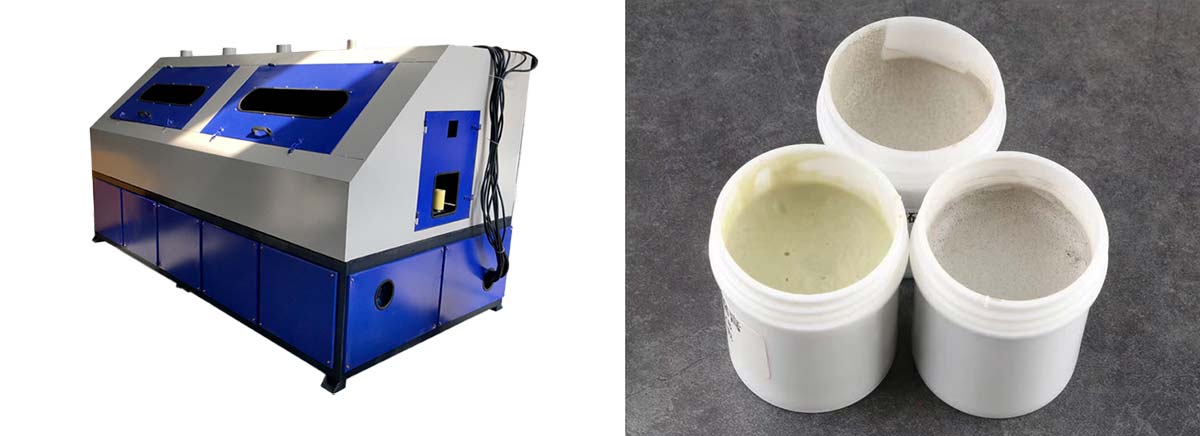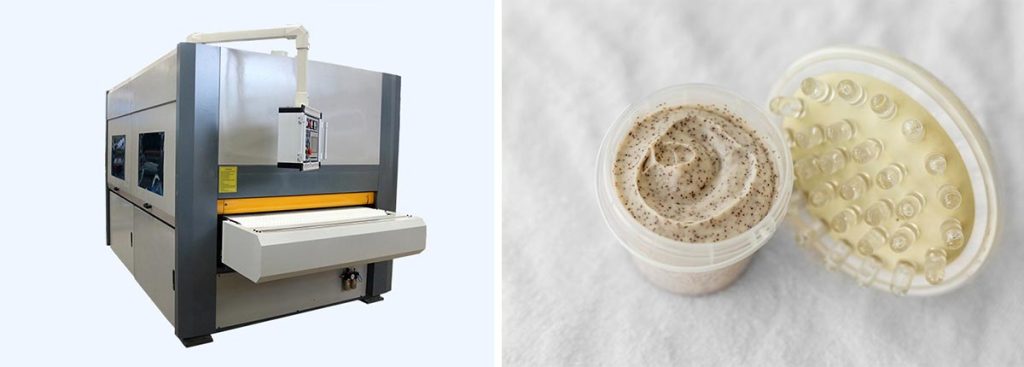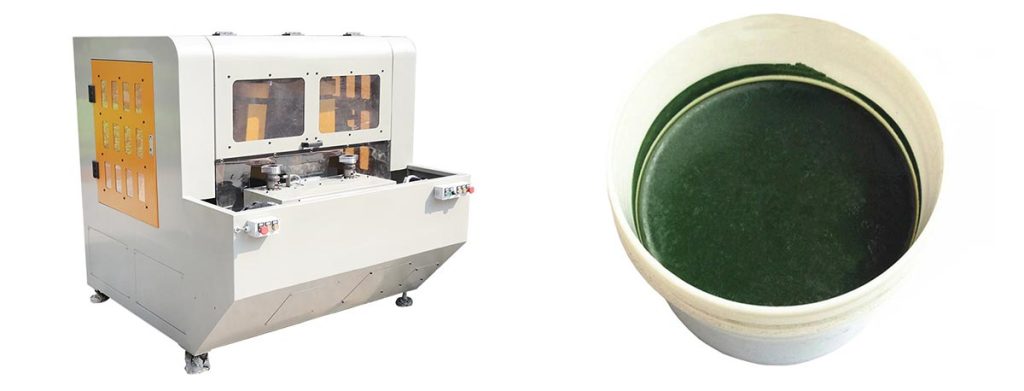

Rust and corrosion can quickly damage metal surfaces, reducing their lifespan and appearance. These issues often arise from exposure to moisture and oxygen, improper handling, or contamination from corrosive materials. Metal polishing compounds offer an effective solution by breaking down rust, restoring shine, and protecting the surface. They work by addressing oxidation, a chemical reaction between iron, water, and oxygen. For stubborn rust, using a polishing machine enhances the process, ensuring a smooth and polished finish. With the right tools and techniques, maintaining metal surfaces becomes easier and more efficient.
Key Takeaways
- Metal polishing compounds effectively remove rust and corrosion, restoring the shine and extending the lifespan of metal surfaces.
- Choosing the right type of polishing compound based on the metal type and desired finish is crucial for achieving optimal results without damaging the surface.
- Proper preparation of the metal surface, including cleaning and addressing imperfections, is essential for a successful polishing process.
- Using a polishing machine can enhance the effectiveness of polishing compounds, ensuring consistent pressure and a smooth finish.
- Regular maintenance with metal polishing compounds not only protects against rust but also keeps metal items looking professional and attractive.
What Are Metal Polishing Compounds?
Definition and Purpose
Metal polishing compounds are specialized substances designed to clean, restore, and protect metal surfaces. These compounds contain abrasive particles or chemical agents that remove imperfections, such as rust, scratches, and tarnish. They serve multiple purposes, including enhancing the appearance of metals, improving their durability, and preparing them for further use.
Different types of metal polishing compounds cater to various needs. For example:
- Tripolis are ideal for soft metals like copper and brass, as they eliminate dull scratches while adding shine.
- Intermediates smooth rough surfaces and create a glossy finish.
- Finishing rouges deliver a high-quality luster, especially on delicate materials.
Each compound type plays a unique role in maintaining the integrity and beauty of metal surfaces.
How They Remove Rust and Corrosion?
Metal polishing compounds work by breaking down rust and corrosion through abrasion or chemical reactions. Abrasive compounds, such as those containing aluminum oxide or emery, physically scrape away rust layers. Chemical compounds dissolve oxidation, making it easier to wipe off the residue.
For tougher tasks, using a polishing machine enhances the process. The machine applies consistent pressure and speed, ensuring even removal of rust and a polished finish. This combination of compounds and tools restores the metal’s original shine while preventing further damage.
Benefits of Using Metal Polishing Compounds
Using metal polishing compounds offers several advantages:
- Enhanced Aesthetic Appeal: Polished metals look professional and attractive, making them stand out in various applications.
- Increased Corrosion Resistance: Polishing removes micro-abrasions where moisture collects, reducing the risk of rust.
- Improved Wear Resistance: A smooth surface minimizes friction, extending the lifespan of metal parts.
- Enhanced Product Performance: Polished metals distribute stress evenly, improving their mechanical strength.
These benefits make metal polishing compounds an essential tool for maintaining and restoring metal surfaces. By incorporating them into regular maintenance routines, users can protect their metal items from rust and prolong their usability.
Types of Metal Polishing Compounds for Rust Removal
Abrasive Polishing Compounds
Abrasive polishing compounds are ideal for removing surface rust and imperfections from metal surfaces. These compounds contain finely crushed particles that physically scrape away rust, leaving a smooth and polished finish. They are particularly effective for soft metals like copper and brass, as well as tougher materials like steel and iron.
| Metal Type | Polishing Compound | Description |
|---|---|---|
| Copper | Tripoli compounds | Finely crushed abrasive particles like pumice, perfect for softer metals. |
| Brass | Tripoli compounds | Suitable for filing and scraping away scratches. |
| Steel | Emery compounds | Contains crushed emery rock, effective for tougher metals. |
| Iron | Emery compounds | Known for its abrasiveness, helps polish tougher metals. |
| Tough Metals | Diamond compounds | Extremely abrasive, used for polishing tough metals and gemstones. |
Using a polishing machine enhances the effectiveness of abrasive compounds by ensuring consistent pressure and speed during the process. This combination restores the metal’s shine while preventing further damage.
Chemical Polishing Compounds
Chemical polishing compounds rely on chemical reactions to dissolve rust and oxidation. These compounds are particularly useful for intricate or delicate surfaces where abrasive methods might cause damage. Safety precautions are essential when using chemical compounds:
- Wear protective gear, including gloves, safety glasses, and dust masks.
- Ensure proper ventilation to avoid inhaling fumes.
- Secure the workpiece to prevent movement during polishing.
- Handle chemicals carefully to avoid skin burns or environmental harm.
Chemical compounds are versatile and can restore the original luster of metals without excessive effort. However, users must follow safety guidelines to ensure effective and safe application.
Multi-Purpose Polishing Compounds

Multi-purpose polishing compounds offer flexibility for various stages of metal restoration. These compounds can be used independently or combined with other products to achieve the desired finish. They are suitable for both soft and tough metals, making them a practical choice for diverse applications.
| Type of Compound | Description |
|---|---|
| Abrasive Compounds | Used to cut and color soft metals, eliminating dull scratches and leaving a smooth surface. |
| Chemical Compounds | Dissolve rust and oxidation through chemical reactions. |
| Multi-Purpose Compounds | Can be used independently or in combination for various stages of polishing based on the desired finish. |
Multi-purpose compounds simplify the polishing process by reducing the need for multiple products. They are an excellent choice for users seeking convenience and efficiency in rust removal and surface restoration.
Step-by-Step Guide to Using Metal Polishing Compounds
Preparing the Metal Surface
Proper preparation ensures the best results when using metal polishing compounds. Follow these steps to ready the surface:
- Use a suitable cleaning agent or degreaser to eliminate grease, dirt, and contaminants.
- Remove surface rust or corrosion with mechanical tools like wire brushes or abrasive blasting.
- Inspect the surface for imperfections such as scratches or dents. Address minor flaws with metal fillers or spot putty.
- Rinse off any residue from cleaning agents or abrasives. Dry the surface thoroughly to prevent moisture from interfering with the polishing process.
A well-prepared surface allows the compound to adhere evenly, ensuring a smooth and polished finish.
Applying the Polishing Compound
The application process determines the quality of the final result. Use the following techniques:
- Select the appropriate polishing compound based on the metal type and desired finish.
- Apply a small amount of the compound to a soft cloth, polishing pad, or buffing wheel.
- Work in small sections, using circular motions to distribute the compound evenly.
- For intricate surfaces, use tools like rotary devices or a polishing machine for precision.
- Wipe away residue frequently to avoid streaks or uneven shine.
Consistent pressure and careful application help achieve a uniform, brilliant finish. For larger surfaces, an orbital polisher or bench grinder can save time and effort.
Finishing and Maintenance
After polishing, proper finishing and maintenance preserve the metal’s luster. Follow these best practices:
- Perform a final buffing with a fine-cut compound and a soft buffing wheel for a high-gloss finish.
- Apply a metal sealant or wax to protect against tarnishing and scratches. Follow the manufacturer’s instructions for optimal results.
- Clean the surface regularly with a gentle cleaner and soft cloth. Reapply sealant or wax as needed to maintain protection.
Routine care ensures the polished surface remains free of rust and retains its shine for years.
Tips for Choosing the Right Metal Polishing Compound
Matching the Compound to the Metal Type
The type of metal plays a crucial role in selecting the right polishing compound. Each metal has unique properties that determine its compatibility with specific compounds:
- Softer metals, such as copper or brass, require less abrasive compounds to avoid damage.
- Harder metals, like stainless steel or iron, need more aggressive polishing agents to remove rust effectively.
- Aluminum benefits from compounds designed to prevent oxidation while maintaining its lightweight structure.
Choosing the correct compound ensures optimal results without compromising the integrity of the metal. For example, using a polishing machine with the appropriate compound can enhance the process, especially for tougher metals like steel.
Assessing the Severity of Rust
The level of rust on a metal surface influences the choice of polishing compound. Light rust may only need a mild abrasive or chemical compound, while heavy corrosion demands a more robust solution. For severe rust, combining abrasive compounds with tools like steel wool can help remove stubborn layers.
Inspecting the surface beforehand helps determine the severity of the rust. This step ensures the selected compound matches the task’s requirements, preventing over-polishing or underperformance.
Considering the Desired Finish
The final appearance of the metal also guides the selection of a polishing compound. Different finishes require specific products and techniques:
- Material Compatibility: Ensure the compound suits the metal type, whether it’s aluminum, brass, or stainless steel.
- Desired Finish: For a mirror-like shine, compounds containing chromium oxide work best. For a matte finish, less abrasive options are ideal.
- Cost-Effectiveness: Balance the cost of the compound with the desired outcome. High-quality finishes may require premium products.
- Environmental and Health Considerations: Choose compounds that are safe to handle and environmentally friendly.
By aligning the compound with the desired finish, users can achieve professional results while maintaining safety and efficiency.
Common Mistakes to Avoid When Using Metal Polishing Compounds
Over-Polishing and Its Risks

Excessive polishing can harm metal surfaces, especially softer ones like aluminum or brass. Over-polishing often leads to material thinning, which weakens the metal’s structure. In some cases, the surface may deform, creating an uneven appearance. These issues can compromise the metal’s integrity and reduce its lifespan.
To avoid these risks, users should monitor their progress closely. Polishing should stop once the desired finish is achieved. For consistent results, using a polishing machine ensures even pressure and prevents overworking the surface. This approach protects the metal while achieving a smooth and polished finish.
Using the Wrong Type of Compound
Selecting the wrong polishing compound can cause significant damage to metal surfaces. Tarnishing, discoloration, or a dull finish often result from mismatched compounds. For example, using a compound designed for stainless steel on brass may lead to poor results.
Users should match the compound to the metal type. For instance, rouge works well for stainless steel, while green compounds suit brass. A polishing machine can enhance the process by ensuring the compound is applied evenly. Proper selection and application prevent damage and deliver a professional finish.
Skipping Essential Preparation Steps
Preparation is a critical step in metal polishing. Skipping this phase often leads to subpar results. For example, failing to clean the surface can trap particles, causing scratches during polishing. Similarly, skipping grit progression leaves deeper scratches visible, even after polishing.
To prepare the surface, users should clean it thoroughly to remove dirt and grease. Tools like steel wool can help remove surface rust effectively. Following grit progression ensures a smooth base for polishing. Proper preparation enhances the compound’s effectiveness and ensures a flawless finish.
Conclusion
Metal polishing compounds provide an efficient way to remove rust and restore metal surfaces. They also protect against future corrosion. Many industries rely on these compounds for maintenance, including automotive, aerospace, and jewelry manufacturing. Eco-friendly options are now available, replacing harmful chemicals with non-toxic alternatives. Processes like physical vapor deposition and powder coating reduce emissions and improve recyclability.
Choosing the right compound and using tools like a polishing machine ensures excellent results. Regular maintenance with these compounds extends the life of metal items. Start using them today to keep your belongings in pristine condition.
